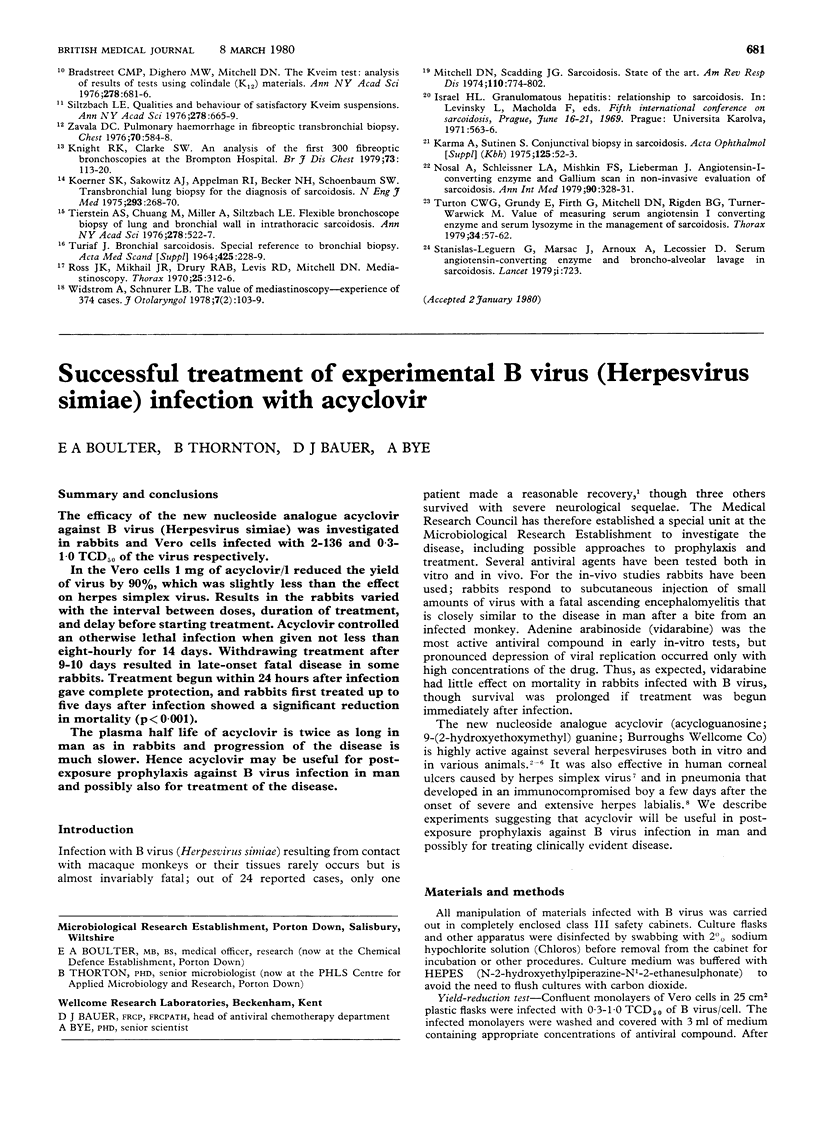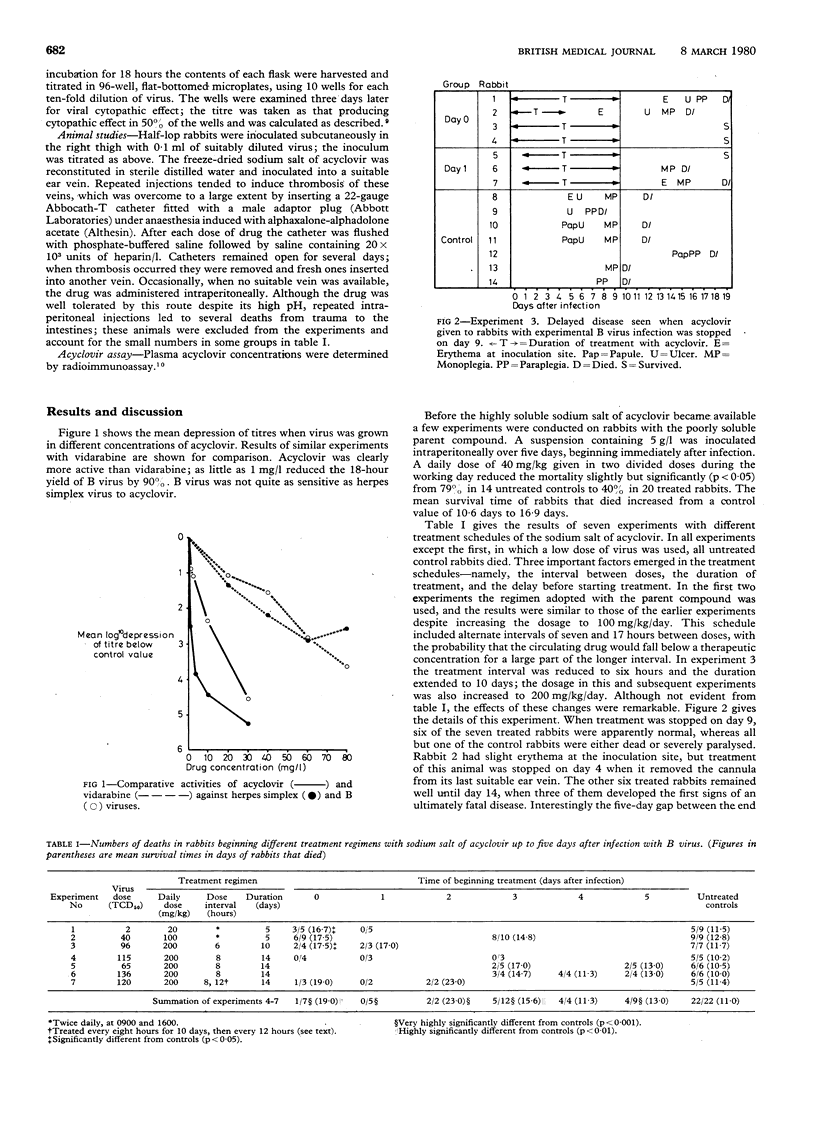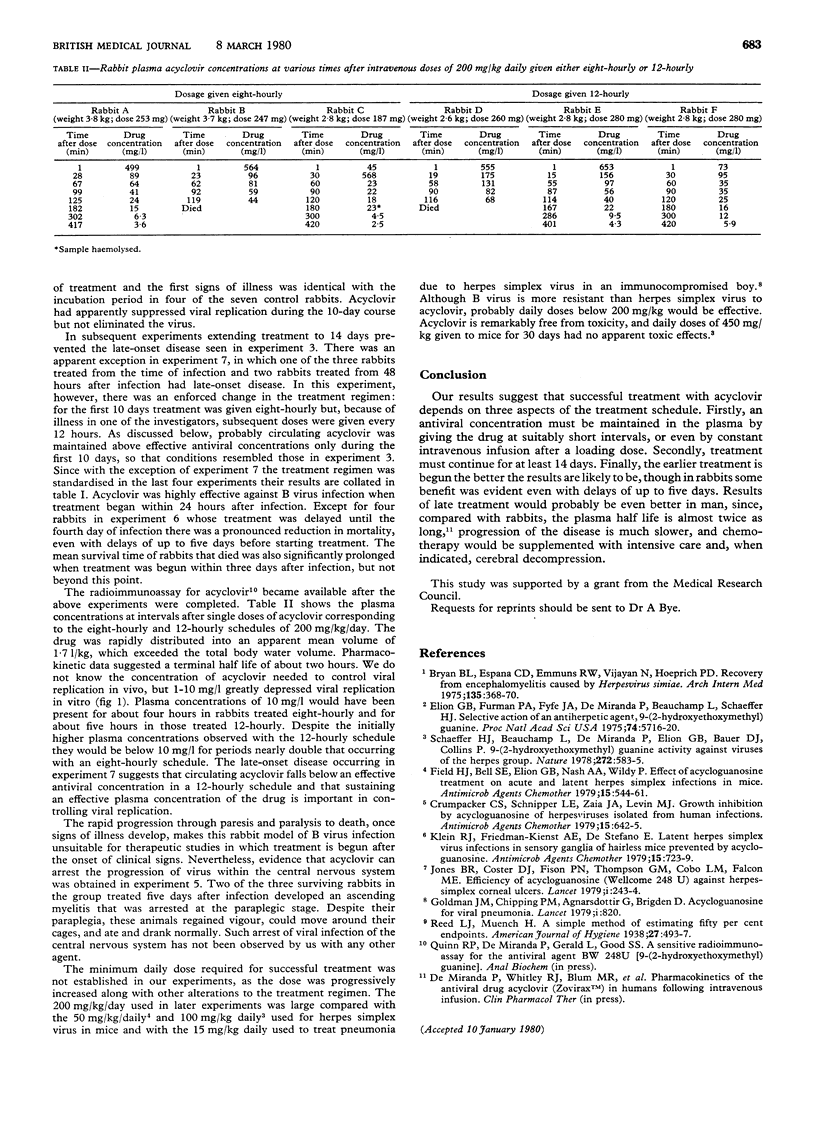Abstract
The efficacy of the new nucleoside analogue acyclovir against B virus (Herpesvirus simiae) was investigated in rabbits and Vero cells infected with 2-136 and 0.3-1.0 TCD50 of the virus respectively. In the Vero cells 1 mg of acyclovir/1 reduced the yield of virus by 90%, which was slightly less than the effect on herpes simplex virus. Results in the rabbits varied with the interval between doses, duration of treatment, and delay before starting treatment. Acyclovir controlled an otherwise lethal infection when given not less than eight-hourly for 14 days. Withdrawing treatment after 9-10 days resulted in late-onset fatal disease in some rabbits. Treatment begun within 24 hours after infection gave complete protection, and rabbits first treated up to five days after infection showed a significant reduction in mortality (p less than 0.001). The plasma half life of acyclovir is twice as long in man as in rabbits and progression of the disease is much slower. Hence acyclovir may be useful for post-exposure prophylaxis against B virus infection in man and possibly also for treatment of the disease.
Full text
PDF


Selected References
These references are in PubMed. This may not be the complete list of references from this article.
- Crumpacker C. S., Schnipper L. E., Zaia J. A., Levin M. J. Growth inhibition by acycloguanosine of herpesviruses isolated from human infections. Antimicrob Agents Chemother. 1979 May;15(5):642–645. doi: 10.1128/aac.15.5.642. [DOI] [PMC free article] [PubMed] [Google Scholar]
- Elion G. B., Furman P. A., Fyfe J. A., de Miranda P., Beauchamp L., Schaeffer H. J. Selectivity of action of an antiherpetic agent, 9-(2-hydroxyethoxymethyl) guanine. Proc Natl Acad Sci U S A. 1977 Dec;74(12):5716–5720. doi: 10.1073/pnas.74.12.5716. [DOI] [PMC free article] [PubMed] [Google Scholar]
- Goldman J. M., Chipping P. M., Agnarsdottir G., Brigden D. Acycloguanosine for viral pneumonia. Lancet. 1979 Apr 14;1(8120):820–820. doi: 10.1016/s0140-6736(79)91334-5. [DOI] [PubMed] [Google Scholar]
- Jones B. R., Coster D. J., Fison P. N., Thompson G. M., Cobo L. M., Falcon M. G. Efficacy of acycloguanosine (Wellcome 248U) against herpes-simplex corneal ulcers. Lancet. 1979 Feb 3;1(8110):243–244. doi: 10.1016/s0140-6736(79)90769-4. [DOI] [PubMed] [Google Scholar]
- Klein R. J., Friedman-Kien A. E., DeStefano E. Latent herpes simplex virus infections in sensory ganglia of hairless mice prevented by acycloguanosine. Antimicrob Agents Chemother. 1979 May;15(5):723–729. doi: 10.1128/aac.15.5.723. [DOI] [PMC free article] [PubMed] [Google Scholar]
- Mason E. O., Jr, Kaplan S. L., Baker C. J., Ritter D. A. Modification of the colorimetric assay for chloramphenicol in the presence of bilirubin. Antimicrob Agents Chemother. 1979 Apr;15(4):544–546. doi: 10.1128/aac.15.4.544. [DOI] [PMC free article] [PubMed] [Google Scholar]
- Schaeffer H. J., Beauchamp L., de Miranda P., Elion G. B., Bauer D. J., Collins P. 9-(2-hydroxyethoxymethyl) guanine activity against viruses of the herpes group. Nature. 1978 Apr 13;272(5654):583–585. doi: 10.1038/272583a0. [DOI] [PubMed] [Google Scholar]


